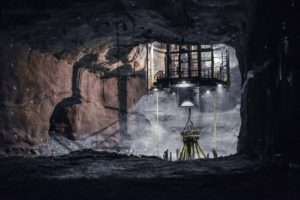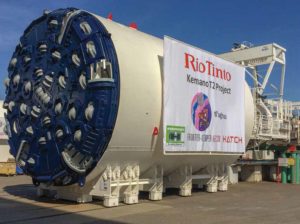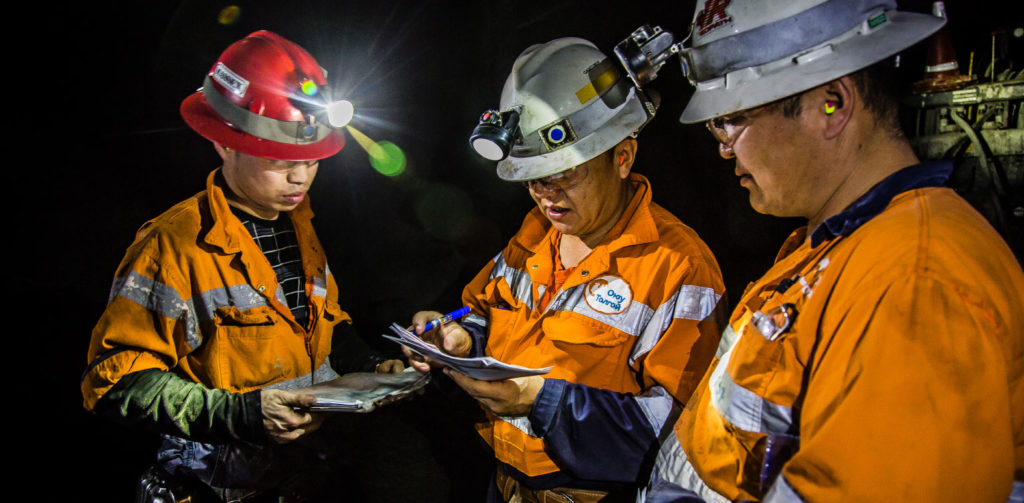Rio Tinto has said completion of the Oyu Tolgoi underground copper-gold mine, in Mongolia, could be delayed for several months as detailed geotechnical data has revealed the rock mass is more variable than previously envisaged.
Oyu Tolgoi Underground is Rio’s major copper growth project. When the underground mine is fully ramped up, the existing open pit and underground, combined, are expected to produce more than 500,000 t/y of copper.
In Rio’s 2018 results, the company said the underground project continued to progress last year with the construction of critical above- and below-ground infrastructure. Detailed engineering design work and overall construction progress was mostly on track, with the main focus, in 2018, being on underground lateral development, the fit out of shaft 2 (the main production shaft), support infrastructure and the convey-to-surface decline.
Recent achievements at the operation, owned 66% by Turquoise Hill Resources (THR) and 34% by the Mongolian government, with Rio Tinto holding a majority stake in THR, include the completion of the overland conveyor connecting shaft 2 to the coarse ore stockpile, significant progress on the second underground crusher and the expansion of the central heating plant, Rio said.

“Overall, the underground lateral development has been proceeding well, with a total of 19 km achieved at the end of January 2019, against our second annual reforecast target of 19.8 km,” Rio said.
But, for the second quarterly report in a row, Rio flagged delays in completing the underground project.
“With the structural, mechanical and electrical fitout of shaft 2, it is now clear that the completion of this technically complex installation and commissioning work will be delayed by several months,” Rio said. “Delayed completion of the shaft, which provides additional hoist capacity to accelerate lateral development, will further delay the date we reach sustainable production beyond the nine-month delay indicated in October 2018.”
Back then, difficult ground conditions had slowed progress in some areas of the underground development, but, as the lateral development has continued, Rio said it had learnt more about the rock mass around and under the orebody and has access to more detailed geotechnical data than was available from surface drilling.
“This data reveals there are areas of the mine footprint where the strength of the rock mass is more variable than anticipated in the feasibility study,” Rio said. “This will require some potentially significant changes to the design of some future elements of the development and the development schedule.”
Detailed design work is now underway as is the work necessary to estimate the impact on cost and schedule from these changes and the delay in commissioning shaft 2, Rio said, while admitting that first production was unlikely to occur in the September quarter of 2021 as previously guided.
There were still many positive development takeaways from the mining major’s 2018 results, in addition to the record $13.5 billion it returned to shareholders as part of last year’s operational performance.
This included, among others, an update on the Kemano hydropower project in Kitimat, British Columbia, and the latest on AutoHaul™, the world’s first automated heavy-haul, long distance rail network.
On the former, a $500 million project in its aluminium business where Rio is constructing a required second tunnel at its hydropower facility, the company said it was expecting to complete the project by late-2020.
It will supply the Kemano powerhouse with water from the Nachako Reservoir, creating a back up to the original tunnel built over 60 years ago.
“We completed the starter tunnel in December 2018 and began boring the main tunnel in January 2019,” it said.
The company is carrying out this excavation with a 1,300-t tunnel boring machine (pictured) that will dig 7.6 km of tunnel through a mountain as part of a project to enhance the long-term security of a clean power supply for the BC Works aluminium smelter.
On AutoHaul, Rio said, in December 2018, it successfully deployed the autonomous rail network.
“Since completing the first autonomous haulage run in July 2018, we have steadily increased the number of driverless journeys, with more than 1.6 million km travelled autonomously in 2018,” Rio said.
The programme is now focused on optimising autonomous operations, according to Rio.











